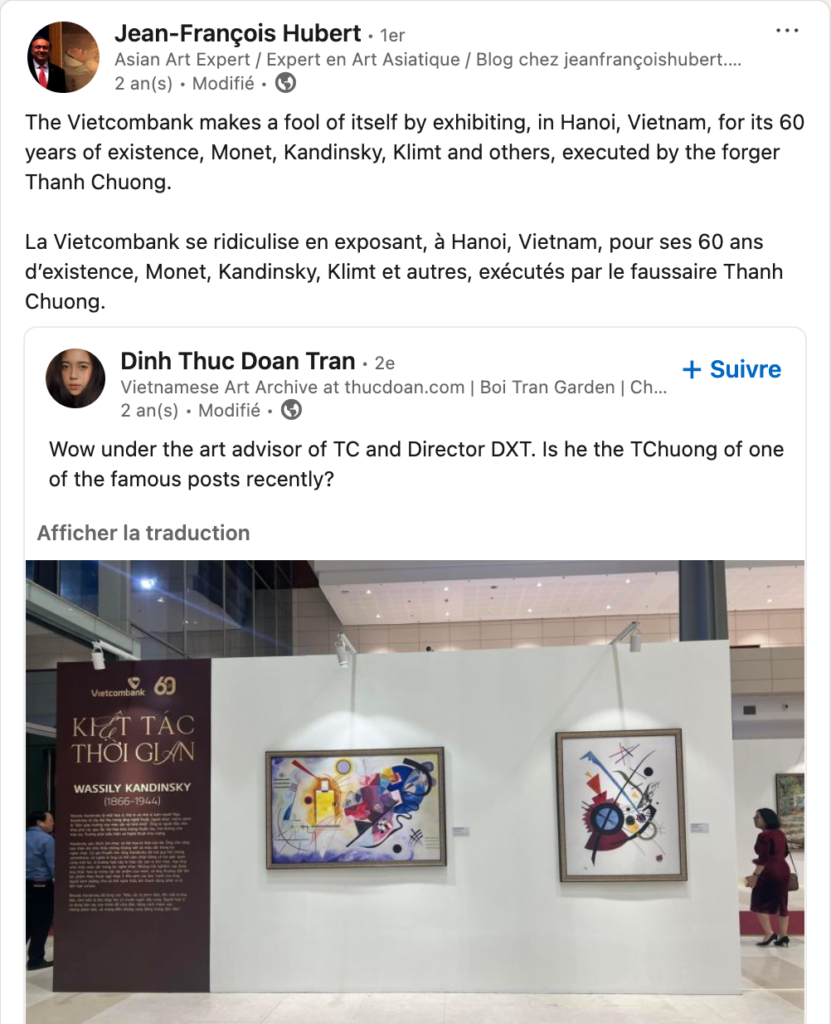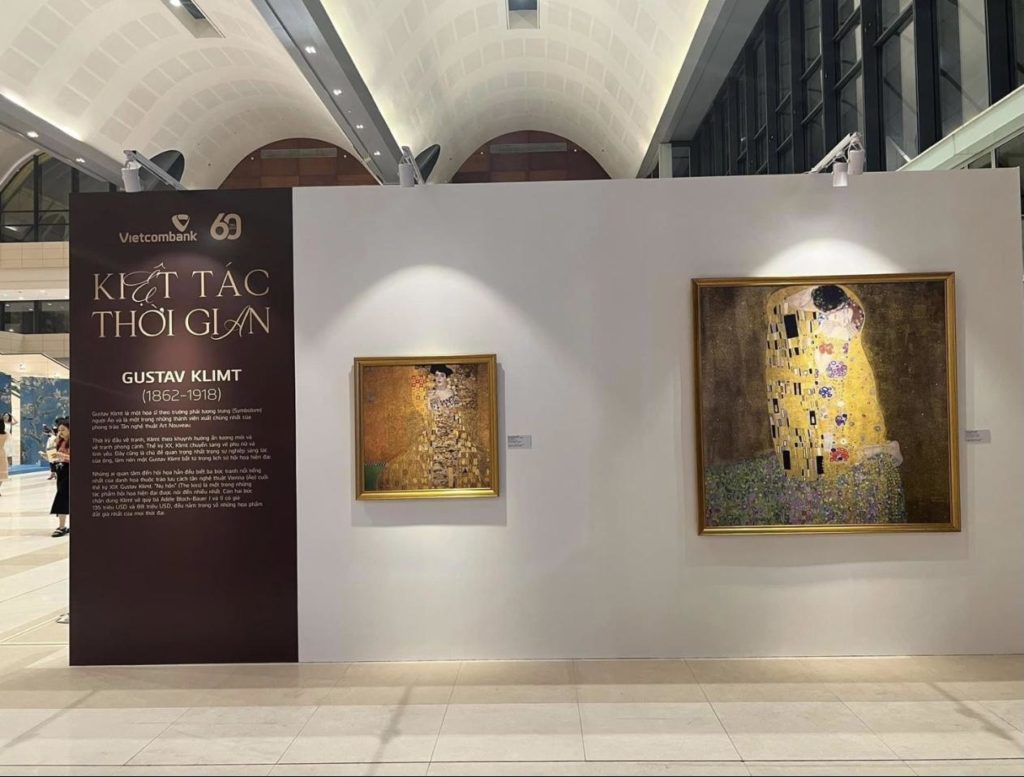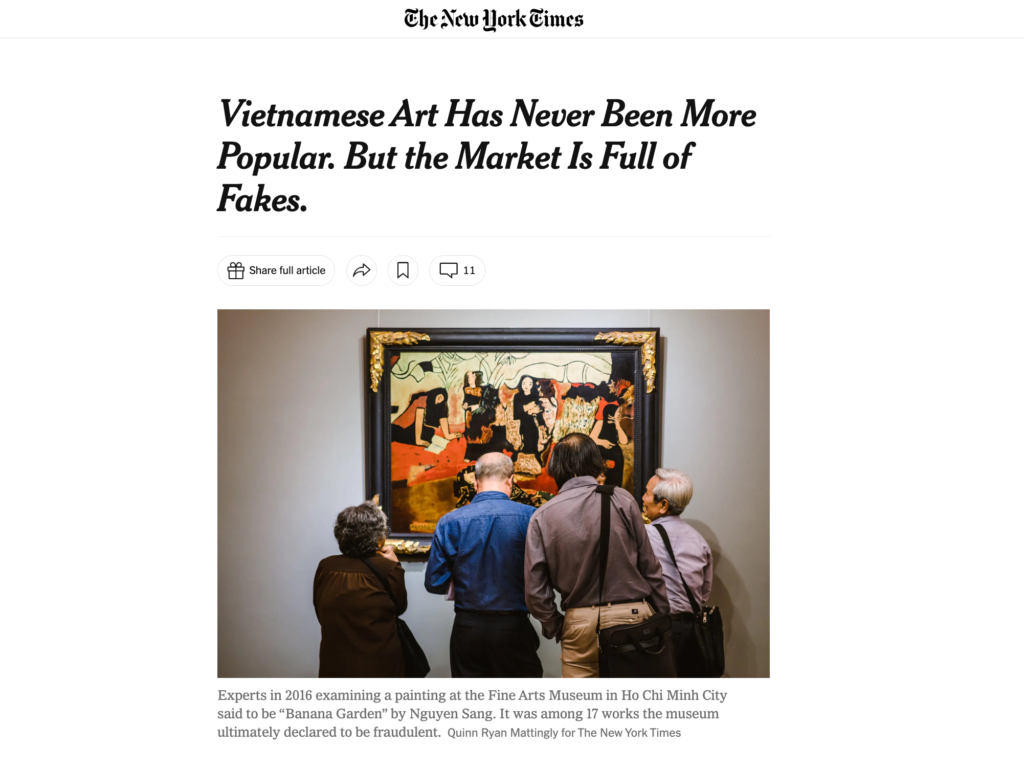The Lost Honor of Richard C. Paddock, Journalist for The New York Times
The past season has been a record-breaking one for Vietnamese painting. Beyond the celebrations, it is interesting to look back at the necessary battles fought against obscurantism and misinformation. As if to anticipate today’s America: in this case, within, the manipulation of a major U.S. press organization. A textbook case:
On August 11, 2017, Richard C. Paddock, a reporter for The New York Times published an article titled “Vietnamese Art Has Never Been More Popular. But the Market is Full of Fakes”. In this text, he questions the authenticity of several works exhibited the previous year at the Ho Chi Minh City Museum of Fine Arts and belonging to the Vu Xuan Chung collection.
Yet this investigation suffers from a serious flaw: a total lack of journalistic rigor.
An absence of adversarial debate
Despite the many accusations aimed at me personally (18 negative and defamatory mentions of my name in his article), Richard C. Paddock never bothered to contact me to compare his allegations with my version of the facts. This lack of contradiction, which runs contrary to the basic principles of journalism, seriously undermines the validity of his statement.
A questionable choice of sources
Paddock bases part of his analysis on statements by Nguyen Thanh Chuong, whom he presents as an eminent artist. First bizarre fact: Nguyen Thanh Chuong is not an artist.
His essential contribution to the history of art can be summed up in the making of forgeries. His latest – a public one – was produced for a Vietcombank exhibition in Hanoi in 2023.
His testimony cannot therefore be considered seriously in determining the authenticity of the works in question.


Copies executed by Nguyen Thanh Chuong, Hanoi exhibition, 2023 
Copies executed by Nguyen Thanh Chuong, Hanoi exhibition, 2023
Unproven allegations and historical lightness
What’s more, the article insinuates that Christie’s and Sotheby’s sold works whose authenticity was later disputed. Which works? Which experts? Titles? Names? No information on these works and no experts in question are identified, making these accusations unfounded.
Just malicious misinformation and defamation.
The absence of factual elements means that these accusations are more in the realm of speculation than of credible journalistic investigation.
Before moving on, let’s take a look at Richard C. Paddock’s (unintentionally) humorous take on the Hanoi School of Fine Arts, which he describes as “synthesizing European post-Impressionist trends with classical Asian styles and subjects”.
By limiting itself to such an elliptical approach, the article omits the depth of this school’s artistic approach.
Connoisseurs are urged not to laugh, but to appreciate…
A market vision far from reality
Paddock argues that the proliferation of fakes has affected the value of Vietnamese art. “Artists and dealers complain that the profiferation of fakes is dragging down the value of Vietnamese art”.
Which artists, which dealers? Names! Still nothing.
This assertion does not stand up to rigorous economic analysis. Since the 1990s, this market has expanded significantly, reaching annual sales of around $60 million by 2023.
Far from being in decline – as demonstrated by the recent sale of the Philippe Damas collection – Vietnamese art is attracting growing interest from international collectors and investors. It is therefore misleading to attribute a supposed decline in value to counterfeiting, especially in the absence of reliable economic indicators to establish a causal link.
For serious information on the constitution of this market, please refer to this blog post I wrote in 2023.
The 17 paintings: questionable authentication
“The museum quickly determined that none of the 17 paintings were created by the painters claimed by the exhibition.”
Wrong: the museum had authenticated the paintings before they were exhibited. What is true is that a special “areopagus” of “specialists”, sent from Hanoi, came to teach the Ho Chi Minh City museum officials a – new – lesson.
The “useful idiot” Richard C. Paddock should have thought of this, even though he doesn’t mention the names of any of these so-called specialists. His choice not to delve into these ideological contradictions limits the scope of his analysis, and overlooks the complex history of authentication practices in Vietnamese institutions.
A single reading of an earlier, well-informed article by one of his New York Times colleagues, Seth Mydans, should have convinced him that these “specialists”, expressly dispatched from Hanoi, lacked any competence in the matter.
An unfounded accusation
One of the most questionable points in the article concerns the claim that the 17 disputed paintings once belonged to me before being sold to Vu Xuan Chung.
These paintings never belonged to me, and therefore I never sold them to Mr. Chung.
Why did Richard C. Paddock not request invoices, wire transfer records, export or import documents for these paintings? Why were these basic checks not carried out? Such an omission suggests either methodological negligence or an intent to manipulate the facts.
A testimony… with no right of reply
Another troubling aspect of this investigation lies in the treatment of the testimony of Zineng Wang, then head of Southeast Asian art curation at Christie’s. Like all competent individuals in the field, he was, of course, “absolutely convinced that the works presented by Mr. Chung were authentic and original.”
Richard C. Paddock presented a false version of their verbal and written exchanges.
In fact, upon the article’s publication, Wang wrote to Paddock, asking him to amend his claims, reiterating that he had full confidence in the authenticity of the artworks in question. His request for a right of reply was never acknowledged, neither by the journalist nor by the newspaper. Why was this legitimate and justified correction ignored by the New York Times? Does such a deliberate omission not reflect a will to steer the narrative in a predetermined direction?
The works by To Ngoc Van and Le Van De: baseless accusations and historical ambiguities
The article also claims that certain works, notably Boats by To Ngoc Van and A Lady of Hué by Le Van De, have copies held in the Hanoi Museum of Fine Arts.
However, a fundamental fact is overlooked: this museum was not founded until 1966, whereas the article alleges that it held Boats as early as 1965.
Likewise, the acquisition by that same museum of a painting by Le Van De “in 1976,” thirty-one years after its execution, without providing any verifiable provenance, appears highly dubious.
Diep Minh Chau, who attested to the authenticity of the Le Van De sold at auction in the text below (translated from Vietnamese), was much more than “a student of the artist”—he was also a major artist in Vietnam, recognized for his expertise.
Autograph text by Diep Minh Chau:
“I knew Le Van De, who lived in Hanoi for five years. He usually painted on Ha Dong silk.
He most likely used Ha Dong silk for this painting—this work was made on that type of material.
I see that this is, in every respect, De’s style; the composition is very soft, the depicted face appears charming and elegant, and the hands are gracefully delicate.
His signature, square stamp, and Chinese inscription remain exactly as I knew them.
Signed, dated and located: Ho Chi Minh, 5-6-92, Diep Minh Chau”
To learn more about Lé Van Dé:
The works “Dragon Dance” and “Poet Nguyen Du on his fishing boat”: missing verifications
Richard C. Paddock then mentions two paintings—Dragon Dance and Poet Nguyen Du on his fishing boat—which remained unsold at Christie’s and Sotheby’s respectively, and claims that both paintings ended up in my possession.
That is yet another lie.
Any unsold artwork at any auction house in the world is returned to the consignor. It was Paddock’s responsibility to check how these works entered (invoices, payments) Mr. Chung’s collection.
A press in crisis: the decline of journalistic standards
In the end, Richard C. Paddock’s article is not based on a rigorous and nuanced analysis, but on unfounded claims and a biased presentation of the key players.
This digital fatwa—fed by inconsistencies, breaches of ethics, or deliberate omissions—deeply affected me, as it was followed by threats, insults, and anonymous denunciations.
I had believed that a journalist, to perform his job with integrity, was supposed to gather and verify information, independently of any outside pressure. That he should refrain from manipulation, avoid relaying rumors, eschew sensationalism, approximations, and bias. And that he should avoid any conflict of interest with those he writes about—and declare any such conflicts when they exist.
Richard C. Paddock and The New York Times failed in their duty of rigor, fairness, and transparency. A true piece of investigative journalism must be based on verifiable facts, a diversity of sources, and a balanced treatment of information. The article published in 2017 violates these principles by multiplying baseless allegations, deliberate omissions, and factual inconsistencies.
“A man restrains himself” (Albert Camus, The First Man, 1994)
Otherwise, Mr. Paddock, one loses their honor. And so does journalism. A press outlet that abandons its principles erodes public trust and compromises the very essence of its mission: to inform with accuracy and integrity.
Jean-François Hubert
